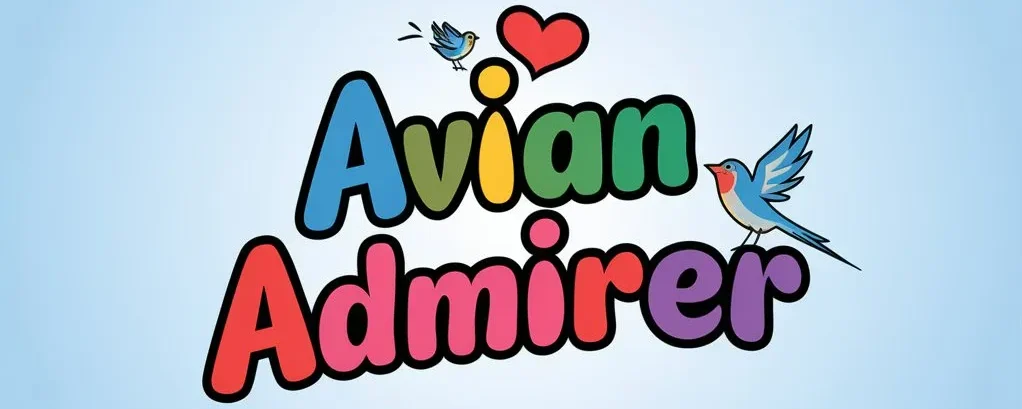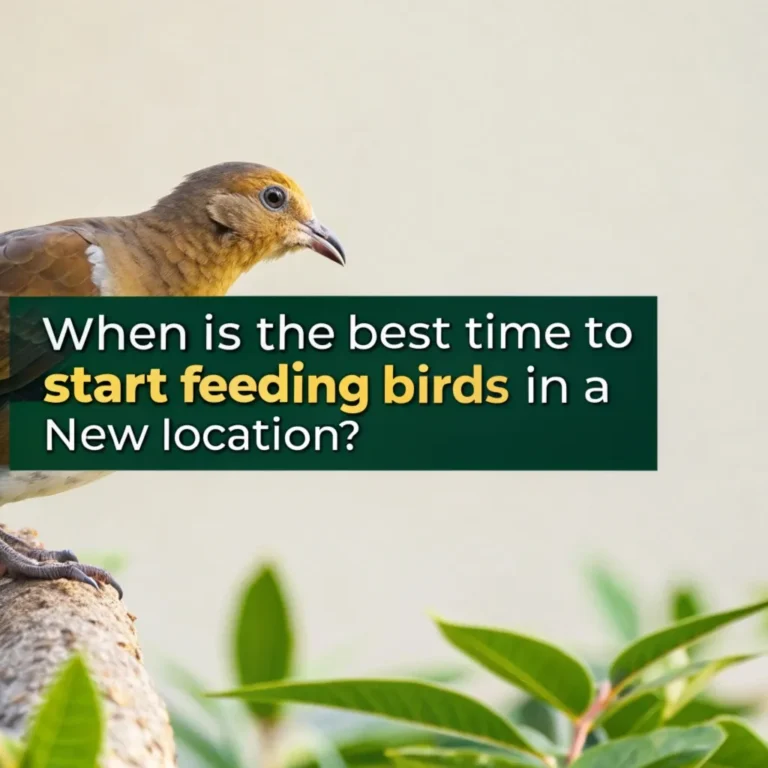10 Reasons Birds Aren’t Visiting Your New Feeder (How to Fix It)
Have you ever put up a new bird feeder in your yard, excited to see colorful birds visit? But then, no birds come. It can make you feel sad and confused. Don’t worry! This is a common problem many people face when they start feeding birds.
There are many reasons why birds might not come to your new feeder right away. In this guide, we’ll look at ten reasons why birds might not be visiting your feeder.
We’ll also share easy ways to fix these problems. By the end, you’ll know how to make your bird feeder a popular spot for feathered friends.
Let’s discover why birds aren’t coming to your new feeder and how to change that!
Key Takeaways
- Location matters: Place feeders near shelter but not too close to predator hiding spots.
- Food quality is crucial: Use fresh, high-quality seeds that birds prefer.
- Patience is key: It can take weeks for birds to discover and trust a new feeder.
- Cleanliness is essential: Regular cleaning prevents disease and keeps birds coming back.
- Variety attracts more species: Offer different types of food and feeder styles.
- Water is important: A clean birdbath can attract birds to your yard.
- Timing affects bird activity: Feeding patterns change with seasons.
- Safety is a priority: Protect feeders from predators and keep them at a good height.
- Neighborhood factors play a role: Nearby feeders or natural food sources can impact visits.
- Persistence pays off: Keep trying different strategies to attract birds.

New Feeders Take Time
Birds need time to find new food sources. They rely on sight to locate feeders. A new feeder might take 3-4 weeks to attract birds. Some feeders, like those for specialty foods, may need more time.
Birds are curious but cautious creatures. They like to explore their surroundings but also need to feel safe. When you put up a new feeder, it’s like adding a new restaurant to their neighborhood.
They need time to notice it, check if it’s safe, and decide if they like the food. This process can take a while, so don’t give up if you don’t see birds right away.
Choose the Right Location
Feeder placement is critical. Birds prefer spots near cover but not too close to predator hiding places. Place feeders:
- Near trees or shrubs for quick escapes
- Away from busy areas
- At least 5 feet high to avoid ground predators
- 10-12 feet from dense cover to prevent ambush
Think of your yard as a bird’s playground. They want to have fun but also stay safe. Put your feeder where birds can easily fly to it from nearby trees or bushes. This way, they have a quick escape route if they feel scared.
But don’t put it too close to bushes where cats might hide. Finding the right spot might take some tries, but it’s worth it to make your feeder a popular bird hangout.

Offer High-Quality Food
Birds avoid low-quality seeds. Cheap mixes often contain fillers birds won’t eat. Use fresh, high-quality seeds that birds prefer:
- Black oil sunflower seeds attract many species
- Avoid mixes with milo, wheat, or cracked corn
- Change seed every 1-2 weeks to keep it fresh
Birds are like people – they enjoy tasty food. Imagine if someone gave you a sandwich filled with things you don’t like. You wouldn’t eat it, right? Birds feel the same way about cheap bird seed.
They prefer seeds that give them energy and taste good. Black oil sunflower seeds are like bird candy – most birds love them! By offering good food, you’re more likely to have happy, well-fed bird visitors.
Keep Feeders Clean
Dirty feeders can spread diseases. Clean your feeders regularly:
- Wash feeders monthly with soap and water
- Disinfect feeders to prevent bacteria growth
- Dry feeders completely before refilling
Just like you wash your dishes, birds need clean “plates” too. A dirty feeder can make birds sick. Think about how yucky it would be to eat from a plate that hasn’t been washed in weeks!
By keeping the feeder clean, you help birds stay healthy. It’s like being a good host at a bird party. Clean feeders mean more birds will want to come back and visit your yard again and again.
Provide Different Feeder Types
Birds have preferences for feeding styles. Offer a variety:
- Hopper feeders attract many species
- Tube feeders work well for small birds
- Platform feeders suit ground-feeding birds
Birds come in all shapes and sizes, and they like to eat in different ways. Some birds are like acrobats, hanging upside down to get seeds. Others prefer to sit and eat.
By having different types of feeders, you create a bird buffet. It’s like a playground with swings, slides, and monkey bars – something for everyone!
This variety makes your yard more exciting for birds and increases the chances of attracting different species.
Add a Water Source
Birds need water for drinking and bathing. A birdbath can attract birds:
- Place birdbaths away from feeders
- Change water daily
- Clean birdbaths regularly
- Consider a heated bath for winter
Water is super important for birds. They use it to drink and take baths. A birdbath is like a mini swimming pool for birds. They love splashing around and getting clean.
Fresh, clean water can attract birds even if they don’t eat from your feeder. It’s especially helpful in hot weather or dry areas. By adding a water source, you’re creating a bird oasis in your yard.

Be Patient During Seasons
Bird feeding patterns change with seasons:
- Spring and fall see more activity due to migration
- Summer offers abundant natural food sources
- Winter increases feeder visits as food becomes scarce
Birds change their habits as the seasons change, just like we do. In spring and fall, many birds travel long distances, so they might stop by your feeder for a snack.
Summer is like a big picnic for birds with lots of natural food around. In winter, your feeder becomes super important because it’s harder for birds to find food.
Understanding these changes helps you know when to expect more or fewer bird visitors.
Protect from Predators
Predators can scare birds away from feeders:
- Keep cats indoors
- Use baffles to deter squirrels
- Place feeders away from predator hiding spots
Birds are always on the lookout for danger. They won’t visit a feeder if they feel scared. Cats and squirrels are like the “bad guys” in the bird world.
By keeping cats inside and using special devices to keep squirrels away, you make your feeder a safe place for birds.
It’s like creating a special protected area where birds can eat without worrying. When birds feel safe, they’re more likely to come back often.
Consider Neighborhood Factors
Your neighbors’ yards can affect bird visits:
- Nearby feeders might attract birds away
- Natural food sources in the area can reduce feeder visits
- Noisy environments can deter birds
Your yard is part of a bigger bird neighborhood. If your neighbor has a really popular feeder, birds might go there instead. Or if there’s a park nearby with lots of natural food, birds might prefer that.
Loud noises can also scare birds away. It’s like how you might choose which friend’s house to visit based on who has the best snacks or the quietest place to hang out.
Understanding your local bird “community” can help you make your yard more appealing to feathered friends.
Try Different Foods
Experiment with various foods to attract more birds:
- Offer suet for woodpeckers
- Try nyjer seeds for finches
- Use mealworms to attract bluebirds
Different birds like different foods, just like people have favorite snacks. Trying new types of bird food is like being a chef for birds. Suet is like a yummy treat for woodpeckers.
Tiny nyjer seeds are perfect for small finches. And mealworms? They’re like candy for bluebirds!
By offering a variety of foods, you’re more likely to attract different kinds of birds. It’s fun to see which birds show up for each type of food.
FAQs
How long does it take for birds to find a new feeder?
It typically takes 3-4 weeks for birds to discover and start using a new feeder. Be patient and keep the feeder filled with fresh seed.
What’s the best seed to attract birds?
Black oil sunflower seeds attract a wide variety of birds. Avoid cheap mixes with fillers like milo or cracked corn.
How often should I clean my bird feeder?
Clean your bird feeder at least once a month with soap and water. Disinfect it to prevent disease spread among birds.
Why did birds suddenly stop coming to my feeder?
Sudden changes could be due to predators, spoiled seed, or seasonal shifts in feeding patterns. Check for these issues and make adjustments.
Can I feed birds year-round?
Yes, you can feed birds throughout the year. Their needs and visiting patterns may change with seasons, but many birds rely on feeders year-round.
How can I attract a variety of bird species?
Offer different types of food and feeder styles. Include seeds, suet, and fruits to appeal to various bird preferences.
Is it necessary to provide water for birds?
Yes, birds need water for drinking and bathing. A clean birdbath can attract birds to your yard, even those that don’t eat from feeders.
How high should I hang my bird feeder?
Hang feeders at least 5 feet high to protect from ground predators, but ensure they’re accessible for refilling and cleaning.
What can I do to protect birds from predators at my feeder?
Use baffles to deter squirrels, place feeders away from areas where cats can hide, and position feeders near escape routes like trees or shrubs.
Should I stop feeding birds in the summer?
You can feed birds year-round, but they may visit less in summer due to abundant natural food sources. Continue offering food, as some birds still rely on feeders.

Ava is a bird enthusiast and nature lover who has spent countless hours observing and learning about the fascinating world of birds. With a passion for sharing her knowledge and inspiring others to appreciate the beauty of birds, Ava writes about her experiences and insights on avianadmirer.com.







